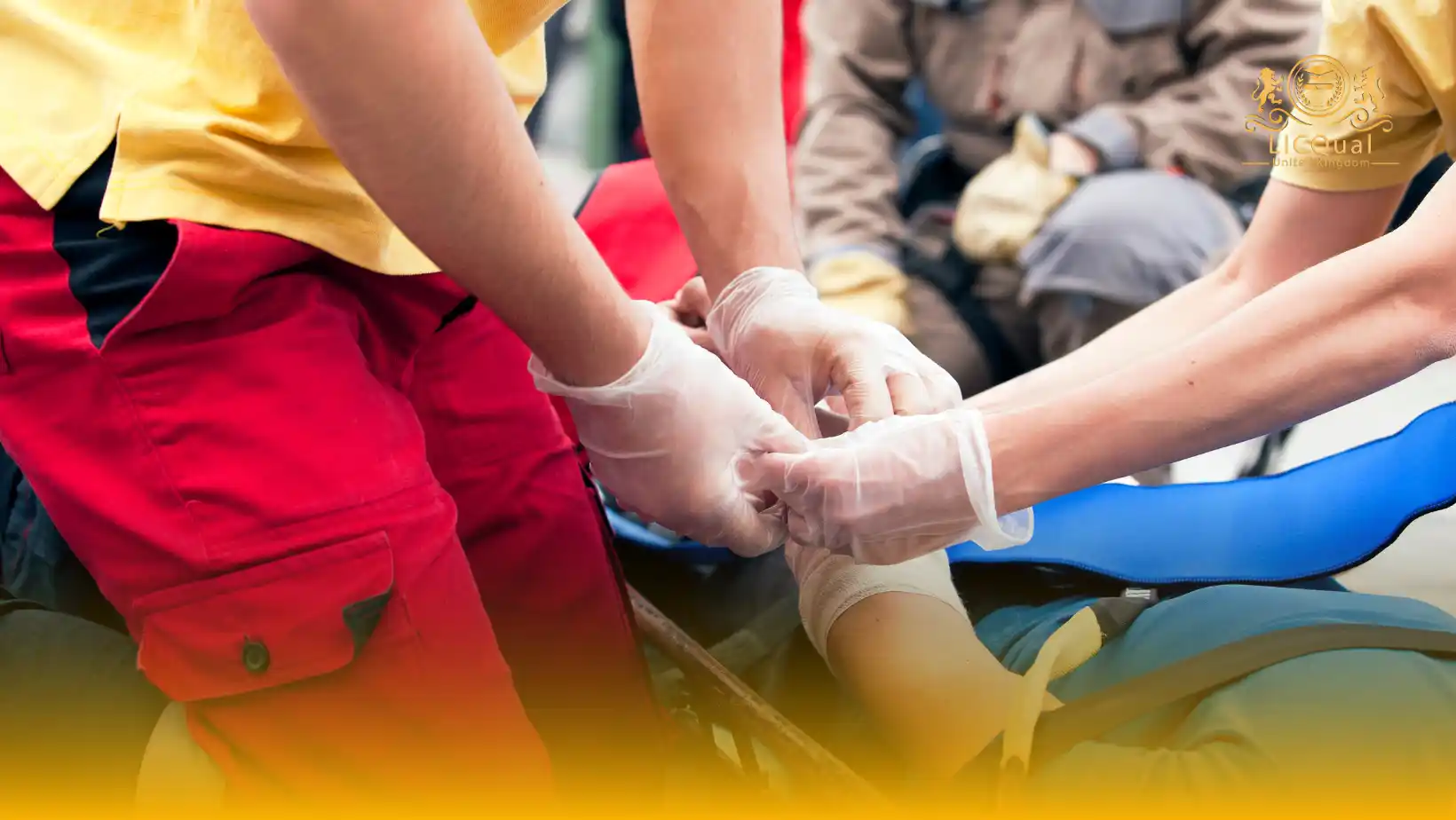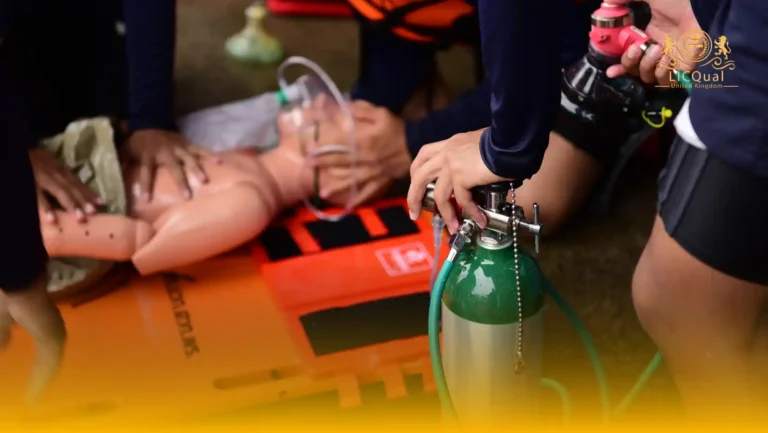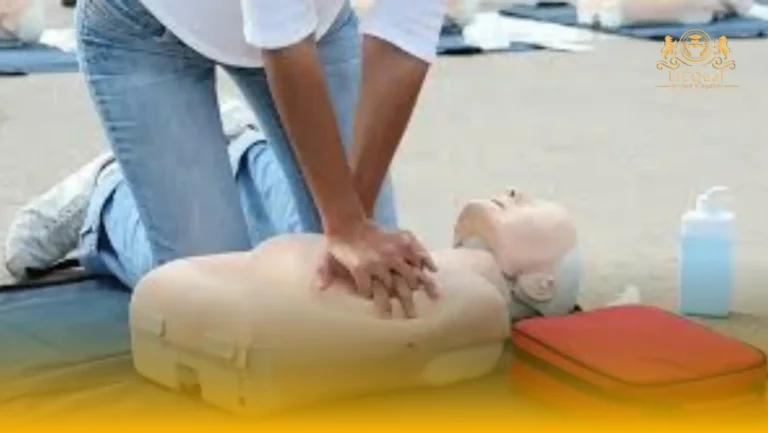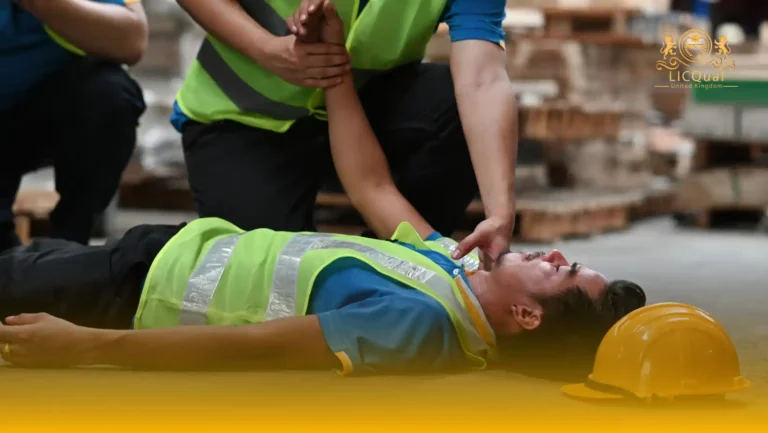The LICQual Level 3 Award in Combined Emergency Paediatric First Aid (EPFA) & Emergency First Aid at Work (EFAW) is a comprehensive, dual-certification course designed to equip learners with essential first aid skills for both workplace and paediatric emergencies. This Level 3 accredited qualification provides practical knowledge and confidence to respond effectively to a wide range of emergencies, including injuries and medical conditions affecting adults, children, and infants.
Ideal for childcare professionals, educators, healthcare workers, and workplace first aiders, this course ensures compliance with UK Health & Safety Executive (HSE) standards and international best practices. Whether you are responsible for children or working in a general workplace environment, this combined award enhances your ability to save lives, minimize injury impact, and promote safety.
This blended 12-hour course covers emergency first aid principles and practical techniques for both paediatric and workplace scenarios. Learners will master CPR for adults and children, manage choking, bleeding, burns, and other common injuries, and learn to assess and prioritize casualty care.
The course also covers legal responsibilities, incident reporting, and safeguarding vulnerable individuals. Delivered by expert instructors through engaging, interactive sessions, the LICQual Level 3 Award provides the confidence and certification needed for first aiders across diverse settings. Achieve dual competence and enhance your career prospects with this vital, industry-recognized qualification.
Course Overview
Qualification Title
LICQual Level 3 Award in Combined Emergency Paediatric First Aid (EPFA) & Emergency First Aid at Work (EFAW)
Total Units
6
Total Credits
6
GLH
12
Qualification #
LICQ2200601
Qualification Specification
To enroll in the LICQual Level 3 Award in Combined Emergency Paediatric First Aid (EPFA) & Emergency First Aid at Work (EFAW) applicants must meet the following criteria:
|
Qualification# |
Unit Title |
Credits |
GLH |
|---|---|---|---|
|
LICQ2200601-1 |
Principles of Emergency First Aid |
1 |
6 |
|
LICQ2200601-2 |
Assessing an Emergency Situation |
1 |
6 |
|
LICQ2200601-3 |
Managing Unconsciousness and Recovery Position |
1 |
6 |
|
LICQ2200601-4 |
Cardiopulmonary Resuscitation (CPR) for Adults, Children, and Infants |
1 |
6 |
|
LICQ2200601-5 |
Managing Common Injuries and Illnesses |
1 |
6 |
|
LICQ2200601-6 |
Recording, Reporting, and Legal Considerations |
1 |
6 |
It is ideal for:
Unit 1: Principles of Emergency First Aid
- Explain the role and responsibilities of a first aider in both workplace and paediatric environments.
- Describe the importance and scope of emergency first aid in saving lives and preventing injury.
Unit 2: Assessing an Emergency Situation
- Demonstrate how to assess an emergency scene safely and effectively.
- Prioritize actions to ensure the safety of self, casualty, and bystanders.
- Identify when and how to contact emergency medical services.
Unit 3: Managing Unconsciousness and Recovery Position
- Recognize signs and symptoms of unconsciousness in adults, children, and infants.
- Demonstrate how to place an unconscious casualty safely in the recovery position.
- Monitor the casualty’s airway, breathing, and circulation until professional help arrives.
Unit 4: Cardiopulmonary Resuscitation (CPR) for Adults, Children, and Infants
- Perform CPR correctly on adults, including chest compressions and rescue breaths.
- Perform age-appropriate CPR techniques on children and infants.
- Demonstrate correct use of Automated External Defibrillators (AEDs) in paediatric and adult cases.
Unit 5: Managing Common Injuries and Illnesses
- Identify and provide appropriate first aid for choking, bleeding, burns, and fractures in all age groups.
- Respond effectively to asthma attacks, allergic reactions (anaphylaxis), seizures, and other common emergencies.
- Understand when to escalate care and seek emergency medical assistance.
Unit 6: Recording, Reporting, and Legal Considerations
- Accurately record details of first aid incidents and treatment given.
- Explain legal and ethical considerations, including consent, confidentiality, and safeguarding.
- Understand responsibilities related to workplace and paediatric first aid legislation.
This course is ideal for:
- Childcare professionals working in nurseries, preschools, and early years settings.
- Parents and guardians seeking vital first aid skills for child safety.
- Teachers and school staff responsible for student wellbeing.
- Healthcare assistants and paediatric support workers.
- Volunteers working with children in community or recreational programs.
- Nannies and babysitters looking to enhance emergency preparedness.
- Early years educators aiming to meet statutory first aid requirements.
- Social workers and child welfare officers involved in child safety.
- Anyone interested in gaining confidence to manage paediatric emergencies effectively.
- Professionals working in child-focused environments who want accredited first aid certification.
Assessment and Verification
All units within this qualification are subject to internal assessment by the approved centre and external verification by LICQual. The qualification follows a criterion-referenced assessment approach, ensuring that learners meet all specified learning outcomes.
To achieve a ‘Pass’ in any unit, learners must provide valid, sufficient, and authentic evidence demonstrating their attainment of all learning outcomes and compliance with the prescribed assessment criteria. The Assessor is responsible for evaluating the evidence and determining whether the learner has successfully met the required standards.
Assessors must maintain a clear and comprehensive audit trail, documenting the basis for their assessment decisions to ensure transparency, consistency, and compliance with quality assurance requirements.







